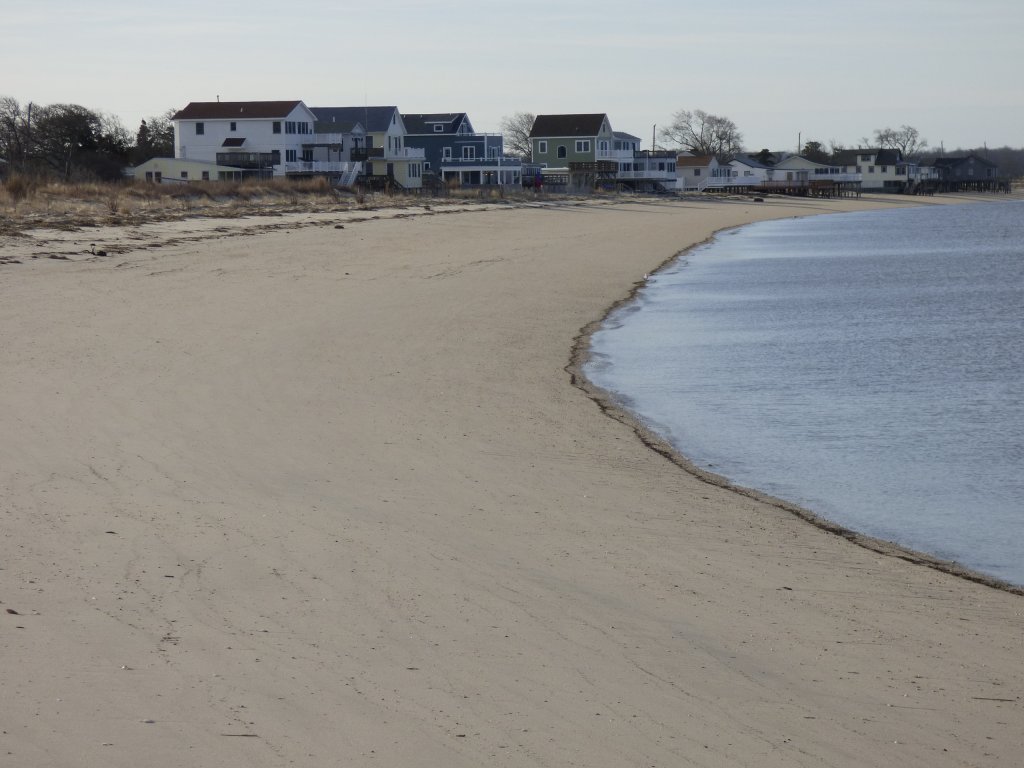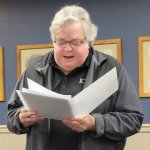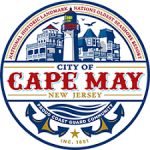DENNISVILLE – What do residents of North Cape May and Del Haven have in common with shell fishermen in Port Norris or the people of Downe Township in Cumberland County? Can residents of Pierces Point and Reeds Beach in Middle Township relate to and support the need for a feasibility study to examine the future of the Maurice River project?
According to Sen. Jeff Van Drew (D-1st) and about 30 other municipal and community leaders, all bayshore communities from the Cape May-Lewes Ferry, North Cape May, to upper Cumberland County have been overlooked and forgotten by state and federal officials when it comes to beach protection resources.
Van Drew and Assemblyman Robert Andrzejczak (D-1st) presided over a special meeting in Dennis Township March 19 that Van Drew characterized as a “first step” through the “log jam of bureaucracy” that is confounding efforts to protect the shoreline and help communities find ways to fund projects required by FEMA and other agencies in the wake of Superstorm Sandy.
Mayors, council members, township administrators, community groups and representatives from Sen. Cory Booker’s office and other interested groups such as the Bayshore Center all sat together and exchanged concerns and ideas for over two hours on coordinated solutions to their common problems.
The goal of this meeting was to establish communication among all bayshore community stakeholders to identify common beach protection and environmental problems and devise united strategies to solve those problems, rather than attempt to deal with FEMA, the Department of Environmental Protection and the Army Corps of Engineers individually.
That initial goal was ultimately achieved when Megan Wren of the Bayshore Center suggested that a permanent “Delaware Bayshore Council” be established so that members representing all affected counties, communities and organizations can meet regularly to work together as a unified force for the benefit of all Delaware Bay communities.
Lower Township Leads
Van Drew opened the meeting by thanking Lower Township Deputy Mayor Norris Clark for being the driving force behind its organizing. He also thanked representatives of the DEP, the U.S. Department of Agriculture, the Shellfish Council, and Dr. Stewart Farrell, director and founder of the Coastal Research Center for attending.
About 50 residents of all the bay communities also attended. Andrzejczak thanked everyone for coming and agreed that the bayside communities have been overlooked, and that the disparity between bay side and ocean side is a matter of “fairness.”
Van Drew began by asking Lower Township Mayor Michael Beck to describe the problems he faces. Beck reviewed issues such as FEMA incorrectly cataloguing the flood control measures that already exist, that Lower already has a robust dune system, and that the wave model used by FEMA to determine (velocity) V-zones is the same for the bay as it is for the Atlantic Ocean when clearly, wave forces on the shallow Delaware Bay are significantly less than the ocean.
He stated that FEMA wants either bulkheads or berms to move the waves away from the beach but that there is already a natural system in place including the Cox Hall and Fishing Creek estuaries plus other wet lands that will protect the beaches.
Clark noted that “We are being treated like the ocean side and not the bay side.” Van Drew asked what their priority was. Beck responded, “We need to move the V-zone further out.” He acknowledged that this change by FEMA would be difficult to achieve while Van Drew suggested that they work with Booker’s office to see what can be done at the federal level.
Middle Township Favors Two Pronged Approach
Middle Township’s Administrator Connie Mahon suggested that the municipality and Lower Township have many common concerns about the V-zone placement as well. She said that Middle and Lower townships have worked closely with Farrell of Stockton University on issues of wave modeling and the fetch issue (calculation of wave strength) as measured in the Delaware Bay.
The bulkhead solution that FEMA recommends is too expensive because even residents that have a bulkhead now need to obtain an engineer to examine it to certify that the structure meets FEMA standards.
On a positive note, Mahon sees opportunity in some of these issues. She offered that there is a conflict between the concept of “coastal storm protection” and “beach environmental protection” and that funding has been designated for storm protection alone.
She suggested that if funds for environmental protection are used to begin creating protective, wider berms for wildlife protection, then “these (berms) will get us closer to achieve the height needed for coastal storm protection.” She feels that the berms, built in stages, could satisfy both environmental and storm protection requirements and complement each other in the long term.
Cumberland County Maurice River and Shell Fisherman Engaged
Mayor Robert Campbell of Downe Township, Cumberland County shared Middle and Lower townships’ concerns explaining that his community is in a V-13 zone and he shares Beck’s concerns about how and where FEMA established these zones.
Campbell also noted that insurance companies in his municipality were paying maybe 20 to 30 cents on the dollar to settle claims to their own benefit. He also noted that FEMA has been so slow to actually fund approved projects that he has had to issue bonds to cover the costs of completing those projects, while FEMA has criticized them for not completing these approved projects on time. He stated his small township cannot afford to front that funding for these projects in the future.
Representatives of the shellfishing industry in Commercial Township and the proposed Maurice River project advocates spoke about the $100-million to 200-million shellfish industry being threatened by a lack of protective funding in the areas of oyster beds and the mouth of the Maurice River.
Van Drew again mentioned, “We need to get the eco-system restoration project re-crafted to include coastal restoration and protection projects. This will take assistance from (U.S.) Rep. (Frank) LoBiondo and Sen. Booker.” He suggested, “We might craft a letter from all of us to our federal officials to achieve the goal of changing the language” that prevents Sandy money from funding both environmental and shore protection projects.
The meeting ended after two hours although many stayed to continue their conversations.
Van Drew listed “action items” that he and all participants see as key to a unified strategy to resolve most problems discussed by participants.
1. Develop a joint letter to Booker and LoBiondo asking that federal grant money, now restricted to fund environmental projects, be expanded to include shore protection projects.
2. Prevail on both Booker and LoBiondo to work to change V-zone models to more accurately reflect the differences between ocean beaches and Delaware Bay beaches.
3. Expedite the Maurice River feasibility study.
4. Establish a “Delaware Bay Shore Council” to permanently represent all bay communities and stakeholders, to include shellfisheries.
A series of meetings will be scheduled to ensure that a unified position is presented to those agencies responsible for shore protection.
To contact Jim McCarty, email jmccarty@cmcherald.com.
Sea Isle City – Please tell me about Trump's presidency that I missed. I recall that the threat from N. Korea stopped. I recall that covid came (from the Chinese) and Trump fast tracked a vaccine. I recall…








